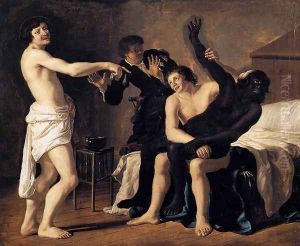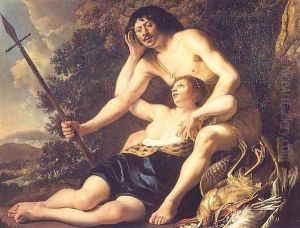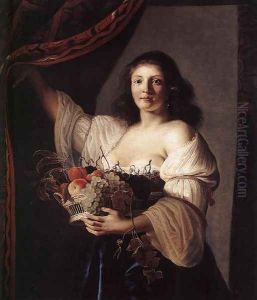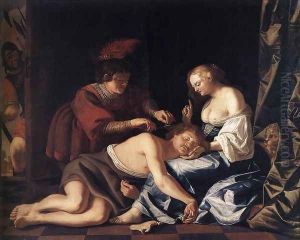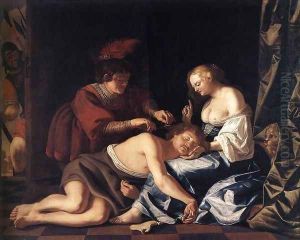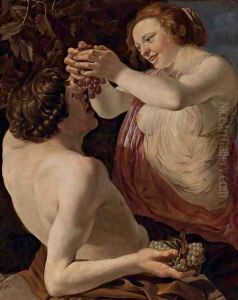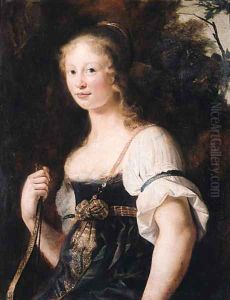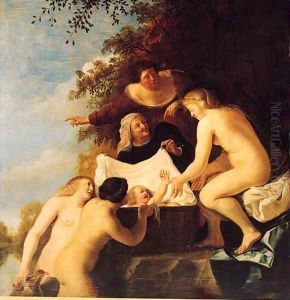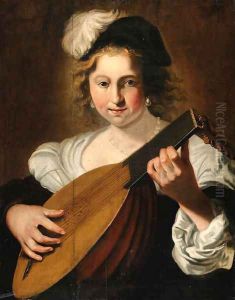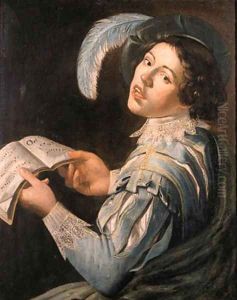Christiaen van Couwenbergh Paintings
Christiaen van Couwenbergh, a Dutch Golden Age painter, was born in Gouda, Netherlands, in 1604. His early life was marked by his apprenticeship under prominent artists of the time, which laid the foundation for his artistic development. Van Couwenbergh initially trained with his father, who was also an artist, before moving to Utrecht to study under Abraham Bloemaert. Bloemaert, known for his influence on the Utrecht school of painting, deeply impacted Van Couwenbergh's approach to art, instilling a mastery of chiaroscuro and a vibrant use of color that would become characteristic of his work.
Van Couwenbergh's oeuvre primarily consists of religious and mythological scenes, executed with a distinctive flair that sets his work apart from his contemporaries. His paintings are known for their dynamic compositions, detailed depiction of human emotions, and a rich, vivid palette. Among his most notable works are depictions of biblical stories, which not only showcase his technical prowess but also reflect the religious and cultural milieu of the 17th century Netherlands.
Despite his considerable talent, Christiaen van Couwenbergh did not gain the same level of fame as some of his Dutch contemporaries, such as Rembrandt or Vermeer. However, his work was appreciated in his time, and he enjoyed a successful career. In 1638, he moved to Middelburg and later settled in Cologne, Germany, where he continued to work until his death in 1667.
Van Couwenbergh's legacy is that of a skilled yet somewhat underappreciated master of the Dutch Golden Age. His paintings, while not as widely recognized today, offer a unique window into the artistic and cultural dynamics of 17th-century Netherlands. His contribution to the Dutch Golden Age of painting, particularly in the realm of religious and mythological art, continues to be appreciated by art historians and enthusiasts alike.
